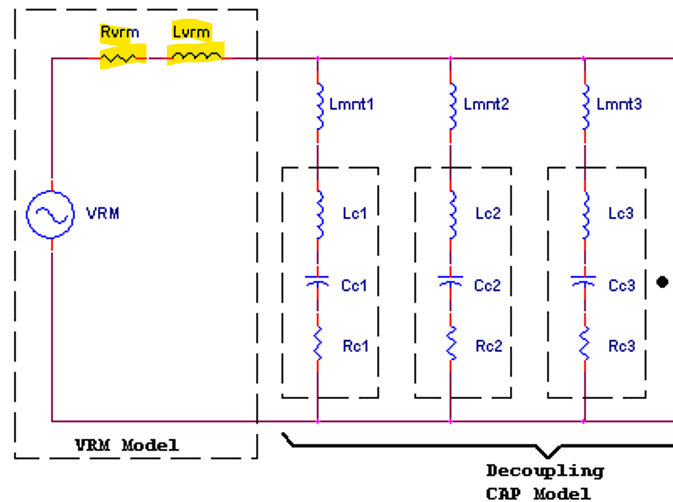Other Parts Discussed in Thread: TPS546B24A
I am trying to model a power distribution network, and would like to extract the output impedance of our design with TPS546D24A. It is also called the VRM model, as here.
I would like to use it in an Altera PDN modeler, imaged below. The impedance is mainly determined by the control loop parameters.
How can I calculate the closed loop output impedance with the data TI offers me in the DS?
Thank you,
MA
The model:
Sample impedance graph without MLCC caps: The orange line is the modeled VRM impedance,



